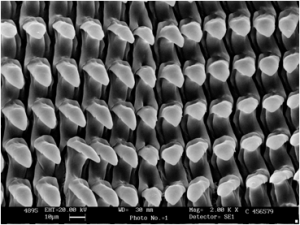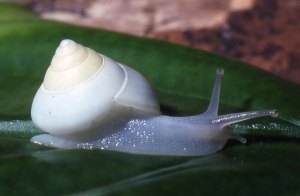Snails have thousands of teeth which are used for scraping or cutting food. The teeth are arranged in rows on a chitinous ribbon and together form the radula. A typical radula may have 120 rows of 100 teeth i.e. around 12 000 teeth, though some species may have more than 20 000 teeth. The arrangement and shape of teeth varies from family to family. FIND MORE in ‘Snail Facts’ 
Monthly Archives: September 2014
Environmental Indicators!

Ivory Treesnail (Noctepuna cerea)
Land snails are important environmental indicators and biodiversity predictors and have a role to play in the monitoring of climate change. Their conservation should be a HIGH priority.
Aussie Land Snails
Invertebrates make up about 99% of terrestrial biodiversity on our planet. Molluscs are the third most common group after Insects and Fungi. Snails and slugs represent 6% of the world’s terrestrial fauna.

AUSTRALIAN LAND SNAILS:
Australia has about 3000 species of land snails ranging from tiny snails measuring about 1mm to the largest land snail, the Giant Panda Snail, Hedleyella falconeri.

Australia’s Most Famous Snail
Crikey steveirwini Stanisic, 2009
STEVE IRWIN’S TREESNAIL

Found only in the 3 places in the wet tropics of North Queensland, the Snail Whisperer says that like its namesake, Crikey steveirwini is a unique creature with some interesting qualities that set it apart from other land snails.
This is an extremely rare species of snail. So far it has only been found in three locations, all on the summits of high mountains in far north Queensland and at altitudes above 1 000 metres which is quite unusual for Australian land snails.
Find more in Steve Irwin’s Treesnail